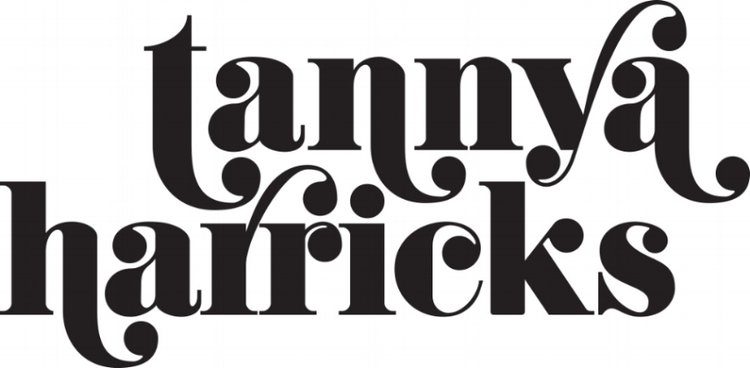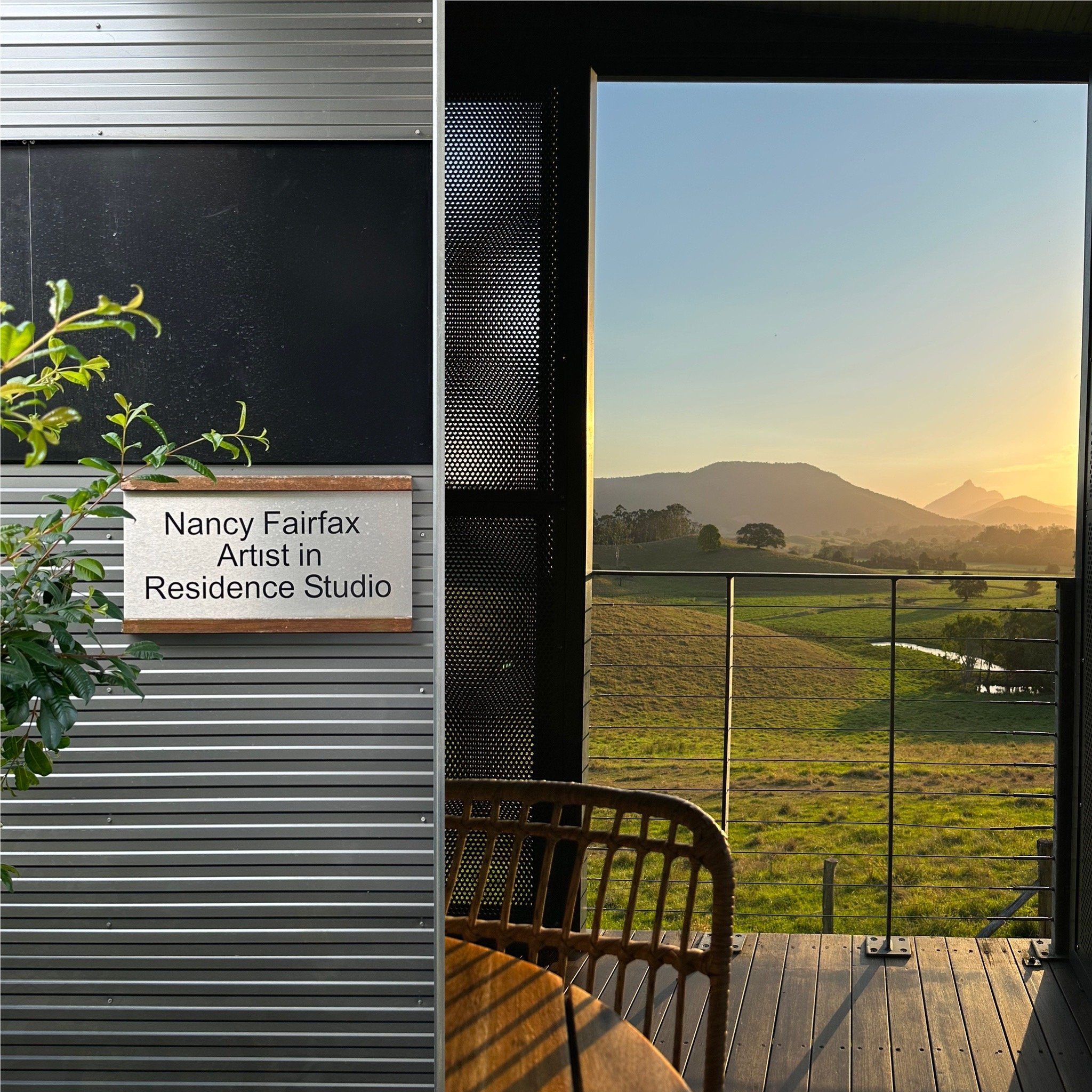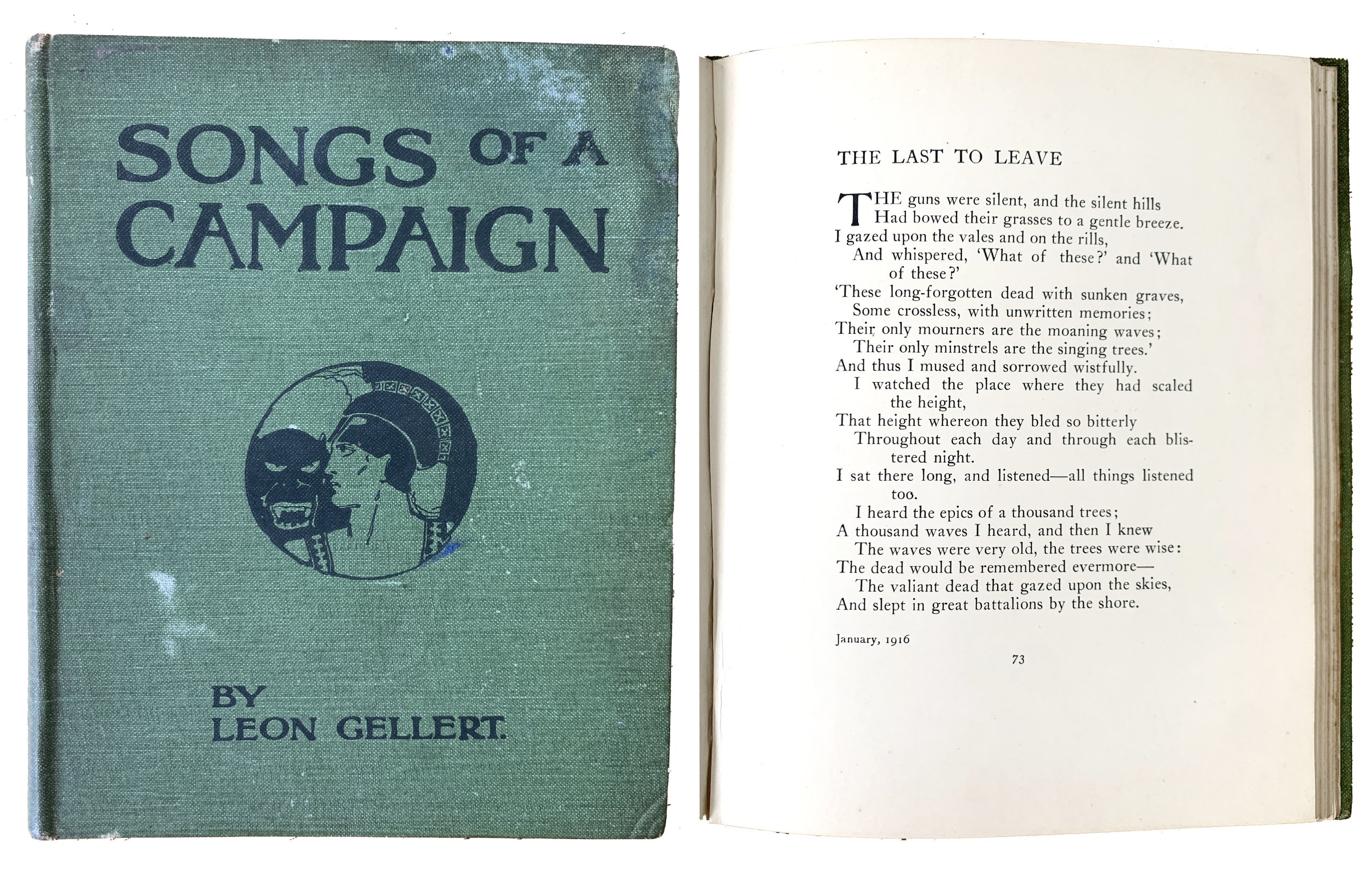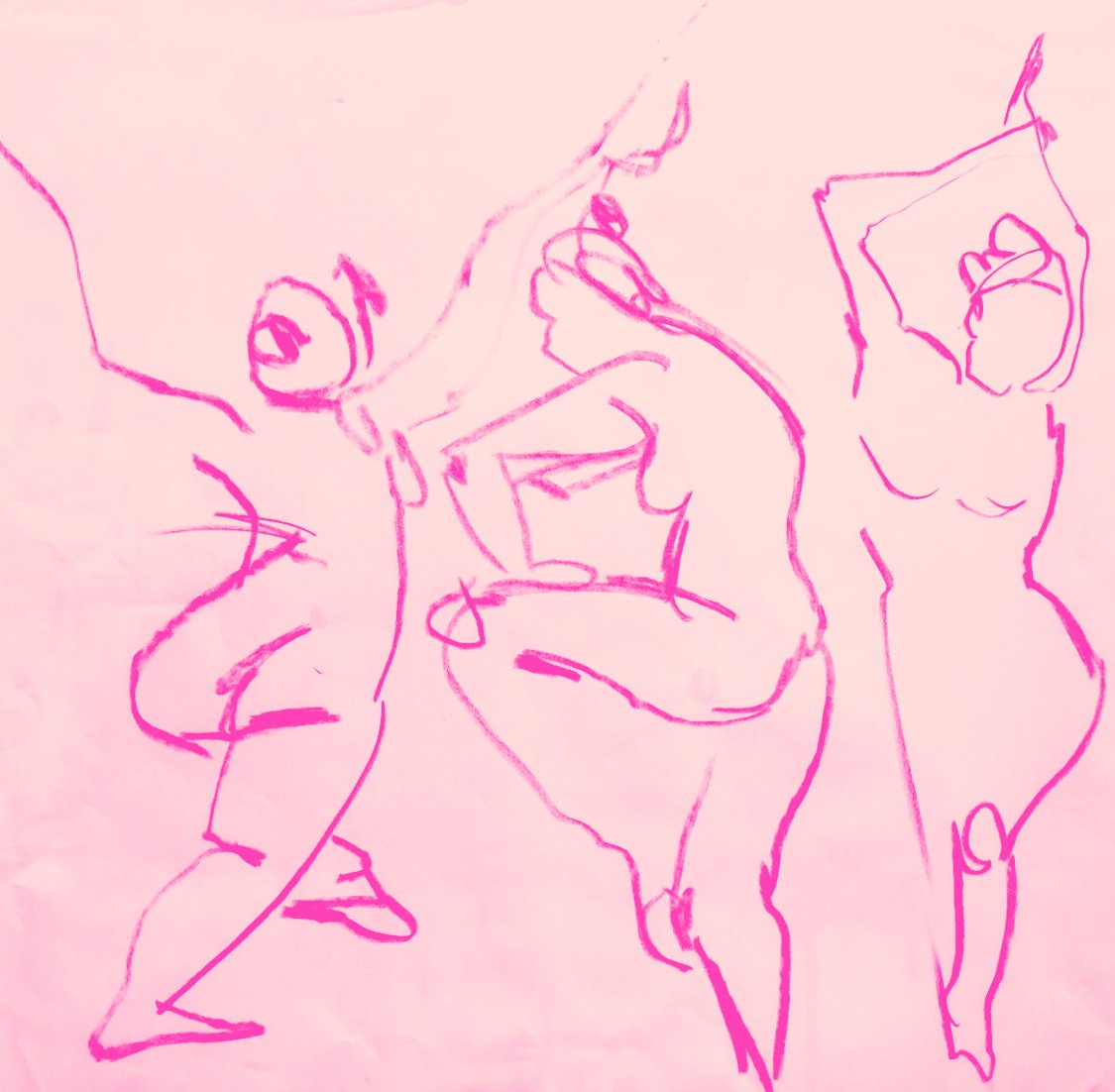Artist in Residence at Tweed Regional Gallery NSW November 2023.
Storm over Cabaret beach.2023. Gouache on paper
Paddington Art Prize Finalist October 2023
A $30,000 National Acquisitive Painting Prize Inspired by the Australian Landscape, in it's 20th year.
EXHIBITION OF NATIONAL FINALISTS
October 12th - 22nd, 11am - 5pm
See the 2023 selection of National Finalists at:
COOEE ART LEVEN GALLERY
17 Thurlow Street, Redfern NSW
Gallipoli art prize 2023
The Last to Leave 2023 oil on linen
Selected finalist in The Gallipoli Art Prize 2023. Inspired by the poem ‘The Last To Leave’ by Leon Gellert (1892-1977), an Australian soldier, poet, journalist and combatant at Gallipoli.
The last to leave
The guns were silent, and the silent hills
had bowed their grasses to a gentle breeze
I gazed upon the vales and on the rills,
And whispered, ‘What of these?’ and “What of these?’
These long forgotten dead with sunken graves,
Some crossless, with unwritten memories
Their only mourners are the moaning waves,
Their only minstrels are the singing trees
And thus I mused and sorrowed wistfully
I watched the place where they had scaled the height,
The height whereon they bled so bitterly
Throughout each day and through each blistered night
I sat there long, and listened – all things listened too
I heard the epics of a thousand trees,
A thousand waves I heard; and then I knew
The waves were very old, the trees were wise:
The dead would be remembered evermore-
The valiant dead that gazed upon the skies,
And slept in great battalions by the shore.
Leon Gellert (Songs from a campaign 1917)
Symbiosis Exhibition at Art2muse Gallery August 30 - Sept 13
Life Drawing at The Warrawee Club
Wednesday evenings 7pm - 9pm fortnightly at The Warrawee Club.
All information, dates and bookings at Eventbrite. Link below.
https://www.eventbrite.com.au/e/evening-life-drawing-at-the-warrawee-club-tickets-403780828327
Exhibition Symbiosis August 30 - Sept 12 2022
Drawing Marathon with Graham Nickson at New York Studio School of Drawing, Painting and SculptureJ
January 2020…. I had wanted to do the drawing marathon at the New York Studio School of Drawing, Painting and Sculpture for about 7 years and finally the time was right. It was absolutely amazing to take part in 10 long days and non-stop drawing mostly large scale. Fantastic life models every day and the highlight of each day being the group critique sessions with Graham and the tutors. It was challenging and transformative. A great way to invigorate my art practice and discover new ways to think about and push my drawing and painting forward.
DINGO Shortlisted for CBCA Award for New Illustrator
Awards announced Friday 16th August. Looking forward to attending in Melbourne!
Current
DINGO shortlisted for NSW Premier's Literary Awards. Patricia Wrightson Prize for Children's Literature

Judges Comments
Described as non-fiction, the text of Dingo nonetheless tells the story of a dingo mother and her litter and mate, as she hides and then hunts, and carries the reader though evocative landscapes… as well as giving a parallel, crisp, factual, non-intrusive text to accompany the story and paintings. Claire Saxby invites the reader in at once, ‘Can you see her? There — deep in the stretching shadows — a dingo’. She keeps the text spare and yet vibrant, as we follow the dingo through spectacular landscapes with a lyrical text: ‘Dingo lifts her head, tastes the air, and then uncurls. Five plump pups spill.’ The factual descriptions accompanying each double-page spread do not jar, but add to the dingo story as we learn real facts about this oft-maligned animal, such as, 'All pack members help raise the pups...' A second reading of the factual text alone may be equally satisfying.
The writer is unsentimental about the ‘lore of the bush’, giving insight into a day in the dingo’s life and especially the way the female must fight to survive. Tannya Harricks’s illustrations are striking. She explains her sketches are first made in situ in the bush and worked over in the studio. They compel the reader to explore the forest and mountains, evoked in thick brush strokes that make the Australian landscape glow and bring the dingo alive. The painterly surfaces achieved in oils and through thick brushstrokes have strong appeal and marry perfectly with the text.
Read MoreWhitley Awards 2018 (Royal Zoological Society of New South Wales). DINGO by Claire Saxby. Illustrated by Tannya Harricks awarded Certificate of Commendation - Children's Book
https://www.rzsnsw.org.au/single-post/2018/10/10/Whitley-Awards-Ceremony-2018
Review for Mallee Sky by Trevor Cairney ~ Sat Feb 23 2019 →
Trevor Cairney is a Professor of Education At Sydney University.
The Children's Book Council of Australia ~ Reading Time Review of Mallee Sky
This story effectively highlights the struggle of drought and the effect of climate change.
I was instantly captivated by Tannya Harricks’ illustrations in this book; They perfectly represent an Australia that is familiar to me – blazing sunsets, dreamy starlit night skies, and the dry and dusty earth.
Jodi Toering’s style is poetic and thought provoking. Her selection of words portray the heartache of drought through different lenses and perspectives. Mum fighting to keep the dust out of the house while clinging to hope, Dad standing on the veranda looking to the sky and hopeful for rain, the boy and his dog mindful of the need to conserve what water they have; and aware of the impact the drought has on their family and community.
Toering’s words and Harricks’ illustrations combine perfectly to represent the celebration of rain and the joy, hope and relief it can bring.
This story is relevant and appropriate as Australia experiences the lasting impacts of climate change. But it’s a positive reminder to remain hopeful so that we too may dance in the rain in the future.
Reviewed by Raquel Mayman
Books+Publishing Review of Mallee Sky childrens book
Mallee Sky (Jodi Toering, illus by Tannya Harricks, Walker Books)
30 October 2018
The Australia of Mallee Sky is a familiar one—wide, red-brown, drought-stricken, unforgiving, yet strikingly beautiful—but never a cliche. The book avoids patronising children, instead welcoming them into a mature literary and painterly conversation. Toering’s language is both lyrical and accessible; the narrative dips into first person, helping children connect to the descriptions of landscape, but largely rests in careful, poetic prose. Complementing the textual imagery of the broad, wide stillness of the drought-stricken region, Harricks’ oil paintings are sure, rich, and full of motion. Mallee Sky takes the drought in its stride, neither sentimentalising nor sterilising the devastating potential of the desert. While the book gently hints at climate change and the struggles of rural towns to survival, it is careful to end in tones of hope and positivity appropriate for a middle to upper-primary age group. Mallee Sky would speak equally well to Australian and non-Australian children, and works on both a factual and storytelling level. Though it reads satisfyingly as a story in its own right, it would also make an excellent starting place for educational discussions with primary school readers about place, landscape, environment and climate change, as well as for creative exercises in both visual and linguistic modes, or indeed in combining the two.
Anica Boulanger-Mashberg, an editor and writer, is a bookseller at The Hobart Bookshop
End of year group show at Art2Muse Gallery
New paintings on show 8 December 2015 - 4 January 2016
Opening 6-8pm Thursday 10 Dec
Take me to the Coast
Exhibition at Bondi Pavilion Gallery opening 8th October 2014.
Cake Wines Archi Bottle unveiling →
Friday 26th September was a fun night of wine tasting and announcement of ArchiBottle winner in Randle Lane Surry Hills..
I was one of 30 finalists from around 500 entries. Winner was Ceara Metlikovec. Well done!
"Laundrette Nude" Front Page of Border Mail
Read MoreA NAKED man looking at his washing in a laundromat and an unclad woman reclining in a forest are among 32 works shortlisted for the inaugural Benalla Nude art prize.
The $50,000 competition has sparked interest from across Australia with the final number whittled back from nearly 700 entries.
list of finalists for Benalla Nude

Well-known artists in the final selection include former Archibald winner Wendy Sharpe, Melbourne artist and former winner of the Dobell Drawing Prize Godwin Bradbeer, Chilean-born Juan Davila who has work on display in New York’s Museum of Modern Art and traditional figure painter Andrew Bonneau, whose work is represented in collections across the world.
Read MoreThe 32 finalists in alphabetical order are: Lisa Banks, Andrew Bonneau, Godiwn Bradbeer, Agnes Bruck, Pietro Capogreco, Geoff Coleman, Geoffrey Cotton, Juan Davila, Robert Dickerson, Graeme Drendel, Tannya Harricks, Olga Juskiw, Stewart Macfarlane, Lily Mae Martin, Matthew Martin, Ted May, Darren McDonald, Amanda Millis, Glenn Morgan, Antony Muia, Steve Parkhill, Nic Plowman, Jenny Rodgerson, Wendy Sharpe, John Skillington, Peter Smeeth, Charlie Tong, Wendy Wade, Anthony Williams, Marcus Wills and Belinda Wiltshire.











